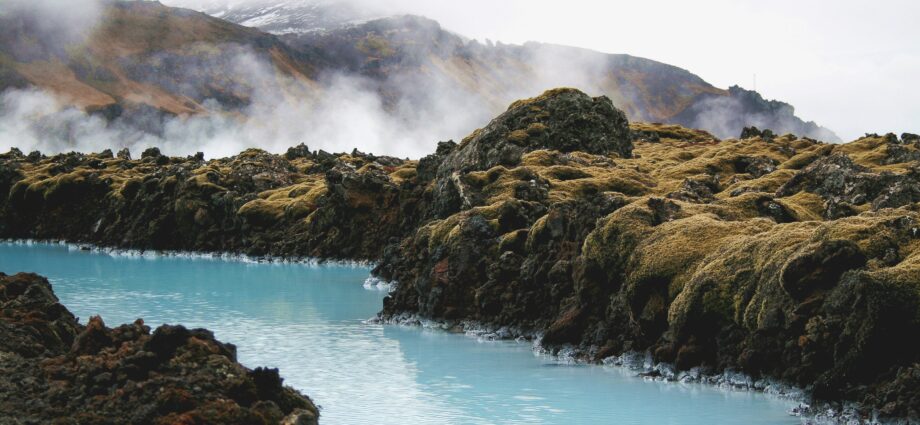Imagine my surprise when I embarked on a trip to Iceland, expecting breath-taking landscapes and stunning natural beauty, only to discover a belief deeply rooted in Icelandic culture: hidden people and elves. Astonishingly, 56 percent of Icelanders believe in these mystical beings, with many claiming personal encounters.
Iceland has become well known for its belief in hidden people, commonly referred to as “Huldufólk” in Icelandic. These hidden people are believed to be supernatural beings that coexist with humans but remain invisible to most. The belief in hidden people is deeply ingrained in Icelandic culture and has been passed down through generations.

The Origins of Hidden People and Elves
According to a popular mythological narrative, at the beginning of time, God paid a visit to Adam and Eve. Overwhelmed with joy, Adam and Eve eagerly presented all their possessions to God, including their beautiful children. God, observed that their children were indeed lovely and held great potential. Curious about the existence of other children, God inquired Eve if there were more offspring yet to be introduced.
In response to God’s question, Eve replied with a lie, stating that there were no other children for God to meet. The reason behind her deception was that she had not finished bathing her remaining children and felt ashamed to have the Almighty witness them in such a state. Consequently, Eve hid these unwashed children from God’s sight.
God was fully aware of their existence and for her dishonesty. He declared, “What you hide from my sight, I will hide from yours.” The unwashed children of Adam and Eve became invisible to human eyes and began residing among the hills, moors, and woods.

More Origins of the Hidden People
The origins of the hidden people can be traced back to ancient Icelandic folklore and mythology. According to legends, the hidden people are descendants of elves who chose to live in a parallel world alongside humans. It is believed that they possess magical powers and have the ability to shape-shift into various forms.
One popular legend tells the story of how the hidden people came into existence. It is said that when God created humans, he gave them a choice between living in heaven or on Earth. Those who chose heaven became angels, while those who chose Earth became humans. However, some individuals were indecisive and hesitated to make a choice. As a result, they were condemned to live in a state of invisibility, forever hidden from human sight.
Another theory suggests that the belief in hidden people originated from the Norse settlers who arrived in Iceland during the Viking Age. Norse mythology was rich with tales of supernatural beings such as elves and dwarves, which may have influenced the Icelandic perception of hidden people.
The Influence on Icelandic Society
The belief in hidden people and elves has profoundly impacted Icelandic culture and society. These mystical beings are not merely dismissed as fairy tales but are deeply ingrained in the collective consciousness. In fact, it is said that every Icelander knows at least one person who claims to have encountered a hidden person or an elf.

In Iceland, it is not uncommon to hear stories about encounters with hidden people. Locals often share anecdotes about seeing small figures dressed in traditional clothing or witnessing unexplained phenomena attributed to the hidden people. Some Icelanders even claim to have had personal interactions or friendships with these supernatural beings.
Elf-Avoidance
Hidden people are often associated with natural landmarks such as rocks, hills, and caves. These places are believed to serve as portals between the human and hidden realms. Many Icelanders hold a deep respect for these locations and consider them sacred.

The belief in hidden people is so prevalent in Icelandic society that it has influenced various aspects of daily life. For example, during construction projects, it is not uncommon for builders to alter plans or reroute roads to avoid disturbing the homes of hidden people. This practice, known as “elf-avoidance,” is taken seriously by many Icelanders who believe it is essential to maintain harmony with the hidden world.
One striking example is the “Elf Rock” near Reykjavik, where a planned road was diverted to preserve the supposed dwelling place of elves. This decision reflects the respect and reverence Icelanders have for their folklore and the harmony they strive to maintain between the natural and supernatural realms.
Personal Encounters and Stories
Numerous individuals in Iceland have shared their extraordinary experiences with hidden people and elves. From stories of finding small, hidden homes in rocks to encounters with ethereal beings, these accounts are both captivating and perplexing. While skeptics may dismiss them as mere imagination or folklore, the sheer number of believers suggests a deeper significance.
A Unique Cultural Identity
The belief in hidden people and elves has become an integral part of Icelandic cultural identity. It serves as a reminder of the country’s rich folklore and mythology, connecting Icelanders to their ancestral roots. The stories passed down through generations foster a sense of wonder, enchantment, and respect for the natural world.

